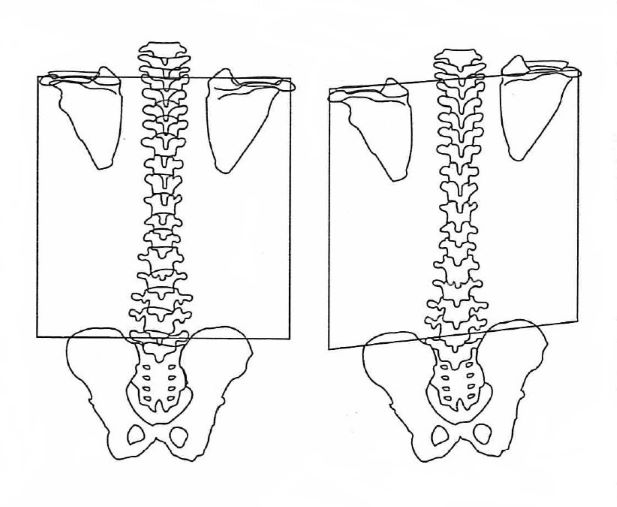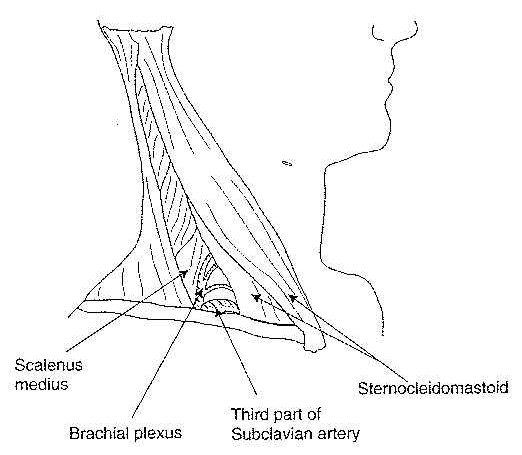Mary (not her real name) came to our clinic for treatment for her frozen shoulder. The pain was from the top of her shoulder to her upper arm, and was even more intense when she placed her hand behind her back. (She also felt stiff and sore in her left upper back and up into the back of her left neck.)
Frozen shoulder is the common term for shoulder adhesive capsulitis (SAC), which is also known as scapulohumeral periarthritis. It is due to a chronic inflammation of the shoulder joint causing pain and a restricted range of shoulder movements. The conventional treatments for SAC are cortisone injections, nonsteroidal anti-inflammatory drugs (NSAIDs), and physiotherapy. Unfortunately, none of these treatments are proven to be clearly effective for SAC in the long-term, and the majority of them often result in various side-effects.*

As with any musculoskeletal problem, I examined the alignment of Mary’s back and neck. I found that her left shoulder was a little higher than her right, and her left hip was also higher than the right.
In some styles of acupuncture, this pattern is known as a ‘4 Corner’ imbalance. The trunk of the body is roughly the shape of a rectangle, with the shoulders at the top corners and the hips at the bottom corners. If one of the corners of the rectangle is shifted, it will affect the other 3 corners as well. (See image.) Often a chain reaction will occur, where the muscles, tendons and ligaments in the other corners try to compensate for the distortion. This will often cause hip, lower back pain, shoulder or neck pain or stiffness.
In a 4 Corner imbalance, there will also be tight vertical muscle bands between the shoulder blades and spine. This was certainly the case with Mary, leading to a clear diagnosis of this condition. Acupuncture was used on specific points in each of her corners to loosen the contracted muscles which had created the shift, as well as the muscle tightness that resulted from the shift. This reduced Mary’s shoulder pain, and she was able to freely put her arm behind her back, which she was unable to do before. However she still had some pain in her shoulder, and the pain in her upper arm hadn’t changed.

It is common for pain in the arm to be the result of tightness or pressure in the neck or shoulder, so these areas were re-examined on Mary. According to Gray’s Anatomy, compression of the subclavian or axillary blood vessels or brachial nerve plexus in the neck (by the scalenus or sternocleidomastoid (SCM) muscles) can cause pain in the arm. This is diagnosed by carefully feeling an area just behind the bottom of the SCM muscle in the neck. If this area is tight or tender, it is likely there is pressure on these nerves and blood vessels, resulting in pain in the arm or shoulder, and restricted range of the shoulder. This is a very common cause of frozen shoulder.
The diagnostic area was found to be quite tight and fairly tender in Mary’s case, so an acupuncture point St38 on the leg was used to relax the scalenus and SCM muscles, and take the pressure off the nerves and blood vessels into her shoulder and arm. After this her arm pain was much less, and the range of her shoulder was much greater.
It is common that there are several factors involved in any musculoskeletal problem. In Mary’s case, the combination of the 4 Corner imbalance and the compression of the nerves and blood vessels in the neck resulted in her frozen shoulder, and by treating both of these we were able to significantly improve her pain and range in a single treatment.
Disclaimer – Please be aware that each person’s body is different, so individual results may vary. If you have an appointment at our clinic, your therapist will conduct a detailed assessment of your condition, and they will be able to advise you on how successful your treatments are likely to be. A result is not promised and/or guaranteed from the act of receiving a treatment.
As with any condition, in order to get results it is crucial to first investigate the cause of the problem. We are currently offering a limited number of free Comprehensive Assessments. (Terms and conditions: the Assessment is a completely free service, with no obligations whatsoever.)
The Assessment helps to identify:
If you would like to book in for an Assessment, please give us a call on Brisbane 3376 6911, or you can book online using the link at the top of the page.
Be well, and have a great life!
*https://www.ncbi.nlm.nih.gov/pmc/articles/PMC5937513/
(Illustrations from Kiiko Matsumoto’s Clinical Strategies Vol. 1)
Valued at $120, your Assessment will help to uncover:
All this will be fully explained to you, and you can ask as many questions as you like. That way we can be sure to give you all of the right information, understanding and advice you need. Terms and conditions: This is a free, no obligation offer.